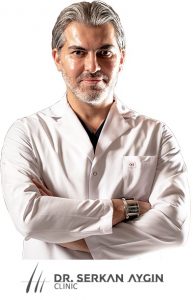How do hair transplantations differ by race/ethnicity?
With FUE being practiced now for decades – and countries like Turkey treating thousands of men from various parts of the world, we know a lot more today than ever. We even know how different ethnicities react to hair transplants. Well, since Turkey sits on the intersection between Asia and Europe, is there any other country where Doctors have so much experience in treating patients from all over the world? That is debatable, but one thing is sure: more and more Indian and Pakistani visitors flock to Turkey for hair transplants, so they may know something we don’t!
Let’s start at the beginning and then discuss how hair transplants might differ for various ethnicities:
People whose hair is growing thin or bald always wonder which treatment is best for them. There are a few treatment modalities for baldness. These are follicular unit extraction (FUE), sapphire FUE and direct hair transplantation (DHI). In all methods, hair is extracted from donor areas and single follicles are implanted into the recipient area. Different ethnicities do respond differently to the exact same method though. The same challenge is present whether in Europe, India, Pakistan or elsewhere in Asia: no nation really escapes the issue of baldness.

Is FUE the Preferred Method?
Dr. Serkan Aygin Clinic performs all three procedures with the same objective: to transfer hair follicles from donor areas to thin or bald areas.
Extraction
FUE punches small holes to extract follicle units, leaving very small punctures all over the area. When these heal, they usually do not leave a visible scar. Also, there is no need for stitches or staples and the puncture holes can close by themselves. People who undergo FUE usually return to work after 2 weeks.
In sapphire FUE, hair follicles are extracted one by one from the donor area using a micro motor and micro punches in sizes 0.6mm, 0.7mm and 0.8mm sapphire blades. The resulting incisions are very small and tent to heal very faster than in classic FUE.
In DHI, extraction and implantation are done simultaneously with an implanter. The implanter extracts one hair follicle, holds it inside, makes a puncture in the receiving area and embeds it into the hole when the plunger is pressed down.
Implantation
In FUE procedures, hair follicles are separated and implanted as single hair follicles onto the recipient area. Steel blades are used to create channels for implantation.
Sharp, durable sapphire blades, varying in sizes from 1mm, 1.3mm and 1.5mm minimize scab formation, accelerate healing and minimize scarring by opening microchannels for implantation. Since channels influence the density, angle, and direction of hair growth, sapphire blades open the best microchannels. Basically, sapphire FUE is an innovative way of performing FUE.
In DHI, extraction and implantation follow each other for each hair follicle, meaning that each one remains out of the body for an instant before implantation, which increases its survival rate. There is reduced bleeding, less trauma and faster healing in the recipient area.
Fluid Retention
Sapphire blades reduce the need for the tumescence, a special fluid that lifts the skin from the bone before incision. Therefore, there is less fluid retention after surgery, making the post-operative phase more comfortable than that after classic FUE.
The verdict is?
FUE has been performed since 2004, and has become the generally accepted hair transplant method. Now, more than a decade later, people expect perfection. Sapphire FUE conducted by Dr. Serkan Aygin Clinic, delivers that perfection, offering the most natural, successful and aesthetically pleasing results with less pain. DHI is another improvement on classic FUE. It can be concluded that FUE is the preferred treatment because of its many advantages and which type of FUE is performed depends on the situation.
Experts in FUE transplantation: Dr. Serkan Aygin
Dr. Aygin from Turkey is one of the few people in the world with more than 20 years’ experience in FUE transplantations, that performed the procedure in a true multi-ethnic environment for people from all over the world.
How do Hair Transplantations Differ by Race/Ethnicity?
Now we can answer this question: Although hair has the same chemical composition in all people, it differs in other respects from race to race. Hair loss also differs from race to race. It is important for hair clinics to be aware of these differences and to treat the patients accordingly. The Dr. Serkan Aygin Clinic has been treating people of all races and gets very good results for all of them because they are aware of the racial differences.
Asian (e.g. Indian and Pakistani, Chinese, Japanese) hair follicles are circular, medium dense, very thick and grow fast. Therefore only a few follicles are needed to create density in a given area. Hair loss among Asians is medium. Asian skin is tougher than European skin but not as tough as African skin so extraction is fairly difficult.
European hair is oval-shaped, medium in thickness, very dense and grows slower than Asian hair but faster than African hair. But Europeans tend to lose more hair than any other race and usually require a transplant of more hair follicles than other races. The skin makes it easy to extract hair follicles.
African hair is circular, thinner, less dense and grows slowly. Of all the races, the African men lose less hair than men from other races. African women and men who plait their hair tend to lose their hairline because of tight braids. However, because the hair is curly, only a few hair follicles are required to create a dense look in a given area. The skin is tough and care must be taken during extraction to make sure that hair follicles do not break.
All the ethnic groups can benefit from FUE but Africans tend to develop visible scars and keloids during the healing process. The surgeon, therefore, has to be more careful with African clients to make sure the puncture holes heal properly.
What you should know about FUE transplants in Turkey:
People are easily tempted by price alone – hence you see hair transplant patients visiting Turkey, London, Thailand, Los Angeles, Miami, Mexico, Korea, Greece and hundreds of other cities around the world.
A low price, however, should not be your only consideration. This is where Turkey is somewhat of a game-changer. As an early adopter of FUE, the Doctors there know a lot about FUE and have considerable experience in the field. Dr. Serkan Aygin did this for more than 20 years now – so he goes way beyond just offering a luxurious experience for the patient. Coupling convenience and expertise with an affordable price obviously means that Dr. Aygin is quite in demand and that you’d have to be proactive to get an appointment: but judging by the before/after images on his site, people are satisfied with the successful outcome they experience.
It is fair to say that FUE transplants in Turkey are quite streamlined: After an online consultation – once your questions have been answered, it is time to visit Turkey. You can literally fly into Istanbul, be picked up by a personal driver and translator and experience a complete transformation and fly back home shortly after that.
Conclusion:
FUE is the preferred way for hair transplants. Turkey seems to be on its way to becoming a preferred country. Weigh up your options and have a free online consultation. After that you’ll be in a good position to make the best choice. Remember that your hair is important. Millions of men suffer baldness and you’re not alone.

